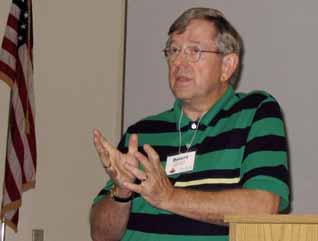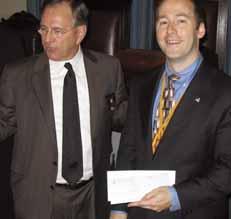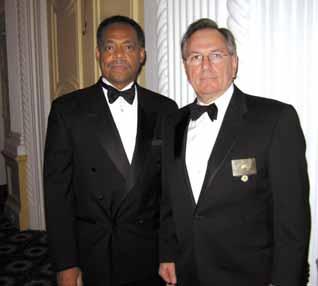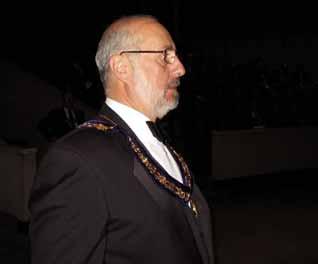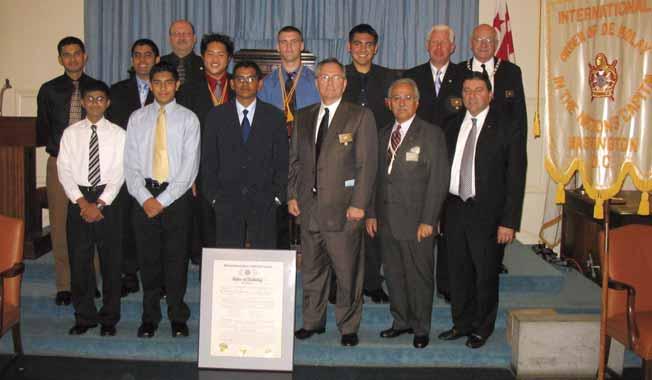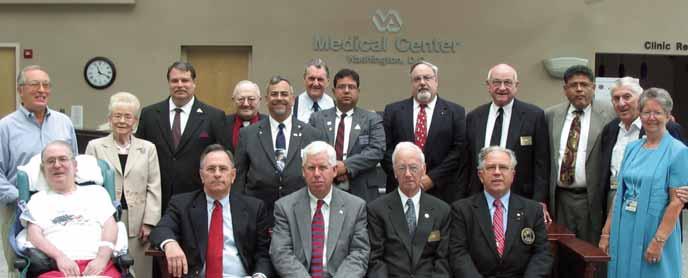
3 minute read
The Evolution Of The Ritual
At the August, 2005, Called Communication of Pythagoras Lodge of Research, the Illustrious Brent Morris, 33°, presented a paper entitled “The Spread of the High Degrees by Masonic Lecturers.” Brother Morris is the only American Mason who is a full member of the prestigious Quatuor Coronati Lodge of Research No. 2076, in London, England; currently he is the Senior Deacon of that Lodge. He is one of only 63 living recipients of the Grand Cross; and is the Managing Editor of the Scottish Rite Journal. His very informative and well researched Among those to whom Brother presentation elicited interesting questions
Morris referred were Thomas and comments.
Advertisement
Smith Webb, Jeremy Cross, Brother Morris Abraham Jacobs, Moses Cohen, informed the gathering and Benjamin Gleason. Thomas that Freemasonry came to the United States Smith Webb, he declared, was from many sources and the “great unifier of American in various forms. He said ritual” and the publisher of “the the early Lodges had little guidance for their Freemason’s Monitor,” a docurituals and ceremonies, ment “which was a teaching and probably relied on tool that helped cement his oral traditions and some printed exposures, ritual codification.” including The Mystery of Free-Masonry (1730); Masonry Dissected (1749/50); Hiram: Or the Master-Key (1768); and Jachin and Boaz (1774-1801). The latter, Morris said, “was the most important exposé published on American soil, and greatly aided in ritual uniformity.”
Brother Morris credited itinerant Masonic lecturers with the development of the American Masonic ritual. These entrepreneurs traveled the countryside, he declared, teaching uniform workings of the three Craft degrees, the four degrees of the American Royal Arch system, and the side degrees. Included in this group of lecturers, he said, were some 100-150 “peddlers” who offered their services to Masonic bodies and individual Masons. In addition to lecturing the Craft on the Craft and Royal Arch Degrees, these lecturers also sold side degrees and chartered various Masonic bodies “under their authority.”
Bilal M. Raschid, Master, Pythagoras Lodge of Research
Among those to whom Brother Morris referred were Thomas Smith Webb, Jeremy Cross, Abraham Jacobs, Moses Cohen, and Benjamin Gleason. Thomas Smith Webb, he declared, was the “great unifier of American ritual” and the publisher of “the Freemason’s Monitor,” a document “which was a teaching tool that helped cement his ritual codification.” Brother Morris stated that Webb “extended the language and forms of his Craft work to the Royal Arch and certified other lecturers.
The fees charged by the lecturers are suggested, according to Morris, by Jeremy Cross’s dairy and by the records of Benjamin Gleason, Grand Lecturer of the Grand Lodge of Massachusetts. The going rate, according to these sources, appears to have been about $4.00 per day for lecturing. Cross apparently earned additional income by establishing Councils of Select Masters at a rate of $20.00 each. As time passed Cross’s fortunes improved, particularly following his appointment as Grand Lecturer of Connecticut in 1818 and his publication of ritualistic documents, including “The True Masonic chart; or, Hieroglyphic Monitor” and “the Templar’s Chart or Hieroglyphic Monitor,” both of which were well accepted by the Craft.
The other lecturers who commanded the attention of Brother Morris, Moses Cohen and Abraham Jacobs, apparently did not direct their attention to the Craft degrees. They specialized instead according to Morris, on the Ineffable, Sublime, and other “side” degrees, which were conferred by Jacobs “to supplement his income from teaching Hebrew.”
Brother Morris’s discussion concluded with an analysis of evolution of the development and dissemination of the degrees that are now offered in the Scottish Rite of Freemasonry.
Editor’s Note: A copy of Brother Morris’s paper, “The Spread of the High Degrees by Masonic Lecturers,” as presented in the Pythagoras Lodge of Research, is on file in the office of the Grand Secretary.

